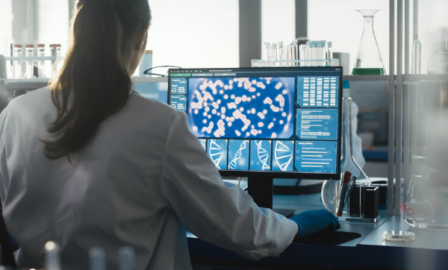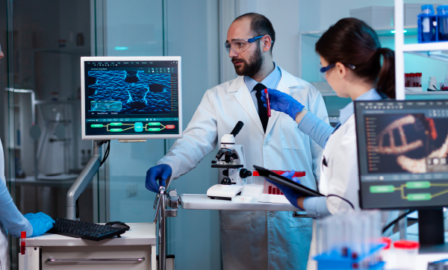The State of Pharma Manufacturing Automation in 2023
In 2022, life sciences companies invested greatly into data and analytics and IT infrastructure in order to enable next-generation capabilities. We continue to see lots of innovation and advancement in this rapidly growing industry, with companies being promised lifesaving benefits or innovative capabilities with each new individual solution. However, understanding what’s available, what the benefits are, and how each individual technology solution intersects with another to create true potential can be quite overwhelming and complex. In this piece, we provide a brief overview of what’s going on in the pharma manufacturing automation space and implications for companies looking to stay ahead of the game in 2023 and beyond.
History of Pharma Manufacturing
Manufacturing for pharmaceutical products has changed from when it began in the 18th century during the first Industrial Revolution (Industry 1.0), when herbal and botanical materials were processed by hand for medicinal use. Soon after, water and steam power paved the way for mass production and the modern pharmaceutical industry, allowing the transition from manual, hand-operated apparatuses to large-scale commercial machinery. The first automation in pharmaceutical manufacturing did not occur until the late 1970s with the use of DCS (Distributed Control Systems) to help aid compliance in regulatory matters. Then, it wasn’t until 1983 when batch-control automation became available and the growth of manufacturing automation began.
Pharma Manufacturing Automation and Processes
Today, we have evolved from Industry 1.0 and are now in Industry 4.0, where the pharmaceutical manufacturing industry is following technological advancements with the use of the Internet and telecommunications. The way information is shared and processed is changing through Artificial Intelligence (AI), Machine Learning (ML), robotics, advanced computing, and the Internet of Things (IoT).
The IoT describes physical objects that have sensors embedded, processing ability, and software. These objects connect and exchange data with other devices and systems over communication networks. A simple example in manufacturing includes the integration of the manufacturing processes to Quality Systems, such as SAP connected to LIMS (Laboratory Information Management System) for inventory controls and batch genealogy. A more advanced example might be robotics moving the material as needed to the next location. The principal areas of concern with the IoT are security and data privacy, so for manufacturing in pharmaceuticals, it’s important to have embedded cybersecurity measures in place as well as policies that protect data privacy.
Going Digital with Big Data
When combining the manufacturing processes to AI, ML and the IoT, it merges the line between the virtual and the physical world as machines are now able to share, analyze, and guide intelligent actions. Machines are becoming smarter and can continuously monitor the process and take predictive measures resulting in less downtime and less issues with quality. These advancements have led to Digital Maturity, Big Data, and real-time decisions.
Digital Maturity is the raw signal data being transformed by collecting data during the manufacturing process, called Big Data, and then digitized into organized information. All the organized information that is stored is what creates the ability for AI to problem solve, learn, and reason. This process of Digital Maturity of Big Data becomes actionable wisdom that promotes real-time decision-making during the manufacturing process. When this happens, it results in less waste and a higher output.
These operating policies aim to be better than Six Sigma and move to eliminate the prevalence of humans in the manufacturing space, as more tasks can be completed by robotics and AI. This method can connect internal and external information, such as market demand and available resources, for real-time responses, monitoring, and prediction, which in turn can save a company considerable materials and costs.
For more on emerging trends and best practices, contact our team today.



